

 |
| History of science and technology in the Indian subcontinent |
|---|
| By subject |
|
|
This list of Indian inventions and discoveries details the inventions, scientific discoveries and contributions of India, including those from the historic Indian subcontinent and the modern-day republic of India. It draws from the whole cultural and technological history of India, during which architecture, astronomy, cartography, metallurgy, logic, mathematics, metrology and mineralogy were among the branches of study pursued by its scholars.[1] During recent times science and technology in the Republic of India has also focused on automobile engineering, information technology, communications as well as research into space and polar technology.
For the purpose of this list, the inventions are regarded as technological firsts developed within territory of India, as such does not include foreign technologies which India acquired through contact or any Indian origin living in foreign country doing any breakthroughs in foreign land. It also does not include technologies or discoveries developed elsewhere and later invented separately in India, nor inventions by Indian emigres in other places. Changes in minor concepts of design or style and artistic innovations do not appear in the lists.

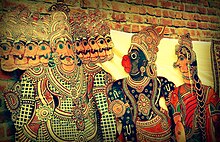
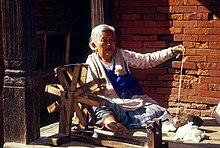

A total of 558 weights were excavated from Mohenjodaro, Harappa, and Chanhu-daro, not including defective weights. They did not find statistically significant differences between weights that were excavated from five different layers, each about 1.5 m in thickness. This was evidence that strong control existed for at least a 500-year period. The 13.7-g weight seems to be one of the units used in the Indus valley. The notation was based on the binary and decimal systems. 83% of the weights which were excavated from the above three cities were cubic, and 68% were made of chert.[158]
| Number System | Numbers | |||||||||
|---|---|---|---|---|---|---|---|---|---|---|
| 0 | 1 | 2 | 3 | 4 | 5 | 6 | 7 | 8 | 9 | |
| Tamil | ೦ | ௧ | ௨ | ௩ | ௪ | ௫ | ௬ | ௭ | ௮ | ௯ |
| Gurmukhi | o | ੧ | ੨ | ੩ | ੪ | ੫ | ੬ | ੭ | ੮ | ੯ |
| Odia | ୦ | ୧ | ୨ | ୩ | ୪ | ୫ | ୬ | ୭ | ୮ | ୯ |
| Bengali | ০ | ১ | ২ | ৩ | ৪ | ৫ | ৬ | ৭ | ৮ | ৯ |
| Assamese | ০ | ১ | ২ | ৩ | ৪ | ৫ | ৬ | ৭ | ৮ | ৯ |
| Devanagari | ० | १ | २ | ३ | ४ | ५ | ६ | ७ | ८ | ९ |
| Gujarati | ૦ | ૧ | ૨ | ૩ | ૪ | ૫ | ૬ | ૭ | ૮ | ૯ |
| Tibetan | ༠ | ༡ | ༢ | ༣ | ༤ | ༥ | ༦ | ༧ | ༨ | ༩ |
| Telugu | ౦ | ౧ | ౨ | ౩ | ౪ | ౫ | ౬ | ౭ | ౮ | ౯ |
| Kannada | ೦ | ೧ | ೨ | ೩ | ೪ | ೫ | ೬ | ೭ | ೮ | ೯ |
| Malayalam | ൦ | ൧ | ൨ | ൩ | ൪ | ൫ | ൬ | ൭ | ൮ | ൯ |
| Burmese | ၀ | ၁ | ၂ | ၃ | ၄ | ၅ | ၆ | ၇ | ၈ | ၉ |
| Khmer | ០ | ១ | ២ | ៣ | ៤ | ៥ | ៦ | ៧ | ៨ | ៩ |
| Thai | ๐ | ๑ | ๒ | ๓ | ๔ | ๕ | ๖ | ๗ | ๘ | ๙ |
| Lao | ໐ | ໑ | ໒ | ໓ | ໔ | ໕ | ໖ | ໗ | ໘ | ໙ |
| Balinese | ᭐ | ᭑ | ᭒ | ᭓ | ᭔ | ᭕ | ᭖ | ᭗ | ᭘ | ᭙ |
| Santali | ᱐ | ᱑ | ᱒ | ᱓ | ᱔ | ᱕ | ᱖ | ᱗ | ᱘ | ᱙ |
| Javanese | ꧐ | ꧑ | ꧒ | ꧓ | ꧔ | ꧕ | ꧖ | ꧗ | ꧘ | ꧙ |


"It is India that gave us the ingenuous method of expressing all numbers by the means of ten symbols, each symbol receiving a value of position, as well as an absolute value; a profound and important idea which appears so simple to us now that we ignore its true merit, but its very simplicity, the great ease which it has lent to all computations, puts our arithmetic in the first rank of useful inventions, and we shall appreciate the grandeur of this achievement when we remember that it escaped the genius of Archimedes and Apollonius, two of the greatest minds produced by antiquity."
 to obtain an infinite series expression for π.[199] Their rational approximation of the error for the finite sum of their series are of particular interest. They manipulated the error term to derive a faster converging series for π.[201] They used the improved series to derive a rational expression,[201]
to obtain an infinite series expression for π.[199] Their rational approximation of the error for the finite sum of their series are of particular interest. They manipulated the error term to derive a faster converging series for π.[201] They used the improved series to derive a rational expression,[201] for π correct up to eleven decimal places, i.e.
for π correct up to eleven decimal places, i.e.  .[202][203] Madhava of Sangamagrama and his successors at the Kerala school of astronomy and mathematics used geometric methods to derive large sum approximations for sine, cosine, and arctangent. They found a number of special cases of series later derived by Brook Taylor series. They also found the second-order Taylor approximations for these functions, and the third-order Taylor approximation for sine.[204][205][206]
.[202][203] Madhava of Sangamagrama and his successors at the Kerala school of astronomy and mathematics used geometric methods to derive large sum approximations for sine, cosine, and arctangent. They found a number of special cases of series later derived by Brook Taylor series. They also found the second-order Taylor approximations for these functions, and the third-order Taylor approximation for sine.[204][205][206] long notes and
long notes and  short notes; this is equivalent to finding the binomial coefficients.
short notes; this is equivalent to finding the binomial coefficients. where N is a non-square integer, in his Brâhma-sphuṭa-siddhânta treatise.[224]
where N is a non-square integer, in his Brâhma-sphuṭa-siddhânta treatise.[224]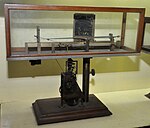
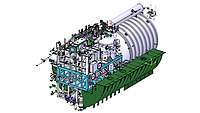
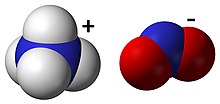
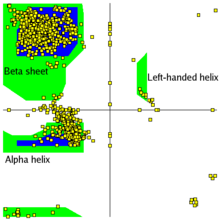

The first improvement in spinning technology was the spinning wheel, which was invented in India between 500 and 1000 A.D.
{{cite journal}}: CS1 maint: multiple names: authors list (link)
{{cite web}}: |first= has generic name (help)CS1 maint: numeric names: authors list (link)
"Geometry, and its branch trigonometry, was the mathematics Indian astronomers used most frequently. In fact, the Indian astronomers in the third or fourth century, using a pre-Ptolemaic Greek table of chords, produced tables of sines and versines, from which it was trivial to derive cosines. This new system of trigonometry, produced in India, was transmitted to the Arabs in the late eighth century and by them, in an expanded form, to the Latin West and the Byzantine East in the twelfth century."
{{cite journal}}: Cite journal requires |journal= (help)
{{cite journal}}: Cite journal requires |journal= (help)
{{cite book}}: |journal= ignored (help) reprinted in Igor Grigorov, Ed., Antentop, Vol.2, No.3, p.87-96, Belgorod, Russia
{{cite book}}: |journal= ignored (help) reprinted in Igor Grigorov, Ed., Antentop, Vol. 2, No.3, pp. 87–96.
{{cite book}}: CS1 maint: others (link)
 by Leibniz, Gregory, and Nilakantha", Mathematics Magazine (Mathematical Association of America) 63 (5): 291–306
by Leibniz, Gregory, and Nilakantha", Mathematics Magazine (Mathematical Association of America) 63 (5): 291–306|
| |
|---|---|
| Lists of inventions or discoveries by country/region |
|
| by topic |
|
| Lists of inventors or discoverers by country/region |
|
|
| ||
|---|---|---|
| Countries and regions |
| |
| Ethnic groups |
| |
| Culture |
| |
| Environment |
| |
| Economy and Politics |
| |
| History |
| |
| Religion |
| |
| Sports |
| |
| Education |
| |
| Military |
| |
| Science and technology |
| |